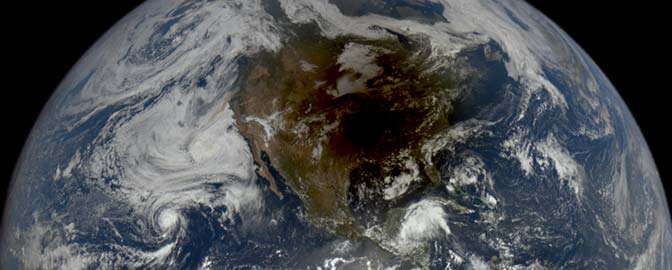Emily Lakdawalla • Mar 03, 2015
Watch Ceres rotate: A guide to interpreting Dawn's images
NASA held a press briefing on the Dawn mission yesterday, sharing some new images and early interpretations of them. The new images include a total of 27 from the Rotation Characterization 2 sequence that I discussed last week, as well as their first global map made by combining these 27 images in a mosaic. I spent yesterday playing with these photos, trying to decide what to write about them. I see lots of things that intrigue me, and I'm looking forward to Dawn investigating them in more detail.
There are lots of places where crater floors are not the shape I expect. There are lots of subtle linear topographic features that might not be related to craters, but it's hard to say. I'm hesitant to write about these subtly intriguing features, because I feel like I indulged in speculation enough in my previous post on Dawn's photos; it seems premature to try to draw any more conclusions.
So instead of writing another lengthy post interpreting the images, I invite you to check out these photos yourself, and offer you some guidance on things to look for. First, just appreciate the full rotation animation. Take a moment to imagine yourself as Dawn, watching Ceres rotate leisurely below you over the course of its 9-hour day.
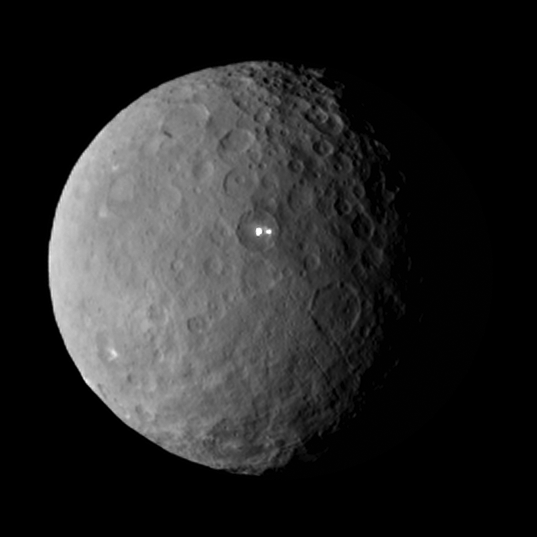
I have modified the animation above from what was released on the JPL website. An astute observer at unmannedspaceflight.com noticed that the animation had inexplicably been stretched so as to make Ceres' disk appear circular, when in fact Ceres is much wider (975 kilometers) than it is tall (909 kilometers). I have rotated and resized the frames to match the proportions and orientation of this previous Dawn image release, although the match is still not perfect, suggesting that the Dawn camera team performed some additional kind of distortion on these images before releasing them. But the correction has made craters circular that did not appear circular in the official release, notably the crater containing the two bright spots.
With that out of the way, what geographic features pique your interest? Here are some things to think about as you tour Dawn's latest views of Ceres. For all of them, focus on making observations, not inferences. This is one of the first skills I taught my fifth grade science students. Try to describe what you see without trying to explain why it is that way.
- Small impact craters should have simple bowl shapes with raised rims. Larger ones should have central peaks. If a crater does not have a raised rim or a bowl-shaped or peaked floor, something has modified it since it formed. In what ways do the craters on Ceres deviate from their expected shape?
- Over time, impact cratering should have covered the surface of Ceres evenly with craters of a variety of sizes. Do you see places where there is a lower density of craters than in other places? Do you see places where there are fewer large craters than other places?
- Do you see areas that are brighter than the rest of Ceres? How about areas that are darker than the rest of Ceres?
- Pick an interesting feature and follow it from image to image. What happens to bright or dark regions as the lighting and viewing angles change? How do bright or dark features relate to local topography?
- At the terminator (where the surface is rotating into nighttime darkness), the low-angle lighting throws topography into sharp relief. Are there places along the terminator in the images where you can see unexpected shapes in the topography? Anything that is not a round crater is unexpected. How would you describe the shape? Follow these features back into daylight; can you still see them?
And some things to watch out for:
- These images are not calibrated. Space and the night side of Ceres are black as they should be, but white pixels in these pictures may not be bright white features, they are just the brightest pixels in the image. So don't immediately assume "ice" wherever you see white pixels. It may just be less black than the rest of Ceres, which is very dark overall. Dawn's deputy principal investigator Carol Raymond did say at the press briefing yesterday that the brightest dot is still not resolved and could in fact be bright enough to be exposed ice or salt. But not all of the white pixels are that bright.
- These pictures are all enlarged from the original data. I have no explanation for why they do this, but they do it to all of their image releases, often sharpening the images, too. My version is about 200% of the original size. In general, you should avoid trying to identify or explain features in digital photos that are smaller than three pixels across. The enlarging of these photos means that you should avoid identifying or explaining features smaller than six pixels across; anything smaller than that was not well resolved in the original data.
Here's another way of looking at the photos, a montage of all 27 frames from the animation. If you're able to view cross-eyed stereo, look at any side-by-side pair of images and cross your eyes to make it pop out of the screen at you. I see all kinds of interesting topography when I look at these photos cross-eyed!
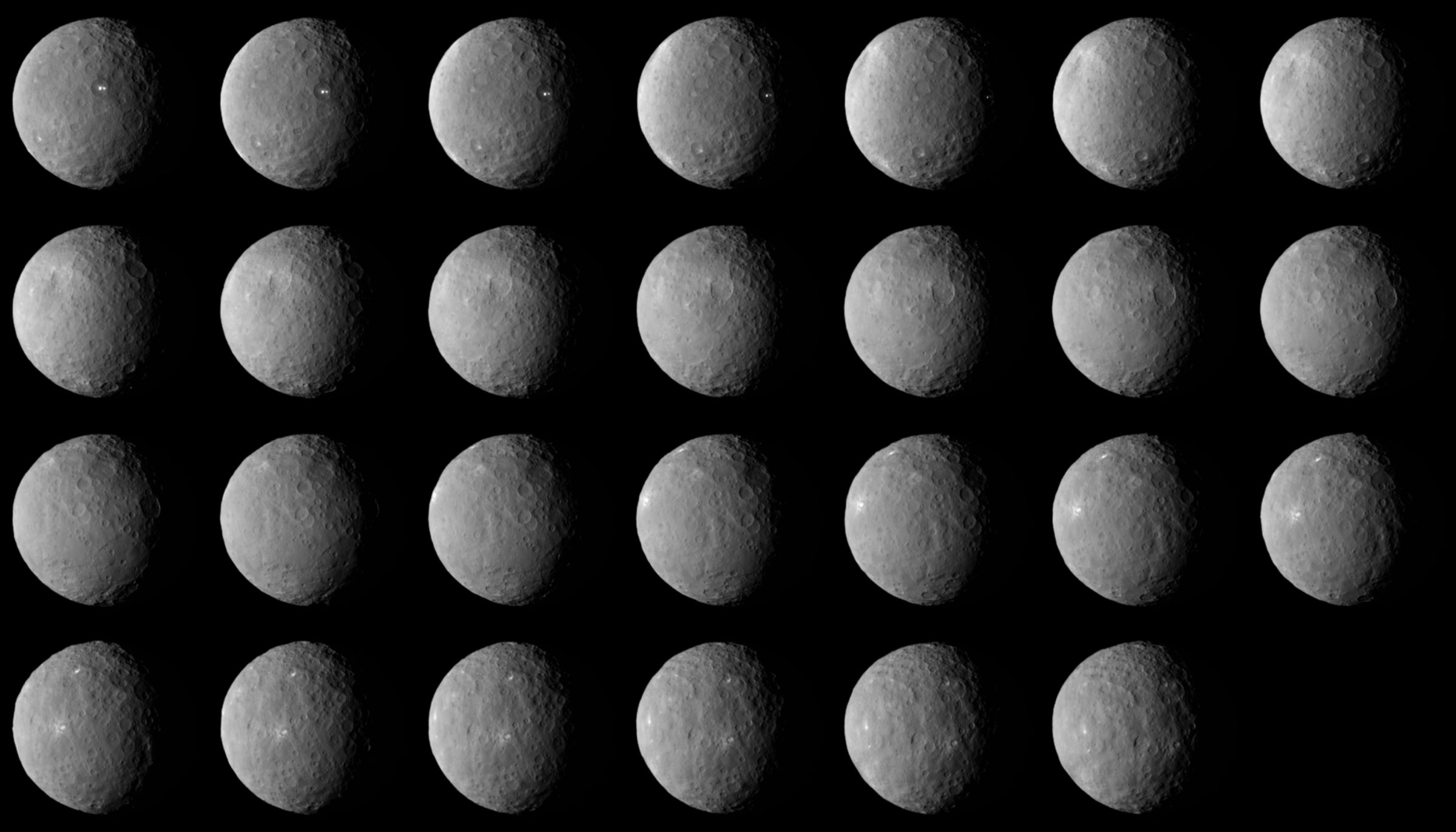
If you can't do cross-eyed stereo, this red-blue anaglyph may work for you. I find that it's just on the edge of being interpretable as 3D -- it makes my brain hurt a bit.
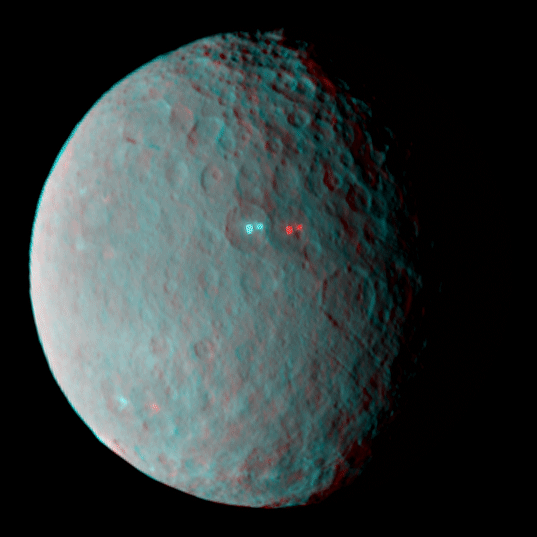
Finally, here is one more view of Ceres captured as Dawn began to travel to Ceres' night side, on February 25. Dawn is going to spend some time on the night side of Ceres, as Marc Rayman explains in his recent Dawn Journals from January and February. There should have been images taken on March 1 with only 23% of the disk illuminated. The next set won't be taken until April 10; that will see only 17% of the disk lit, a very thin crescent. Later in April, Dawn will finally get higher-resolution views of a more illuminated Ceres.
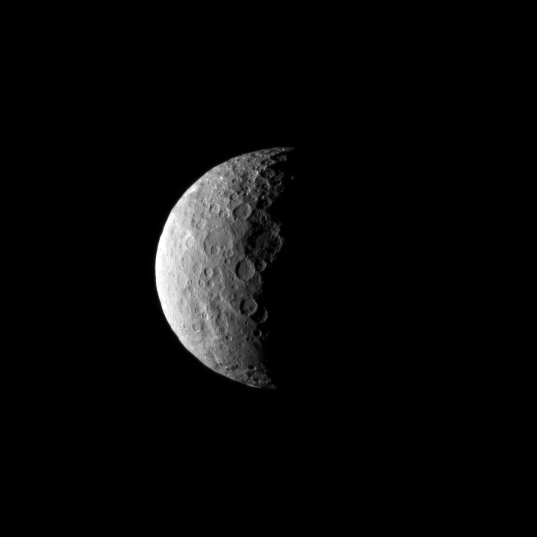
Let’s Go Beyond The Horizon
Every success in space exploration is the result of the community of space enthusiasts, like you, who believe it is important. You can help usher in the next great era of space exploration with your gift today.
Donate Today

 Explore Worlds
Explore Worlds Find Life
Find Life Defend Earth
Defend Earth